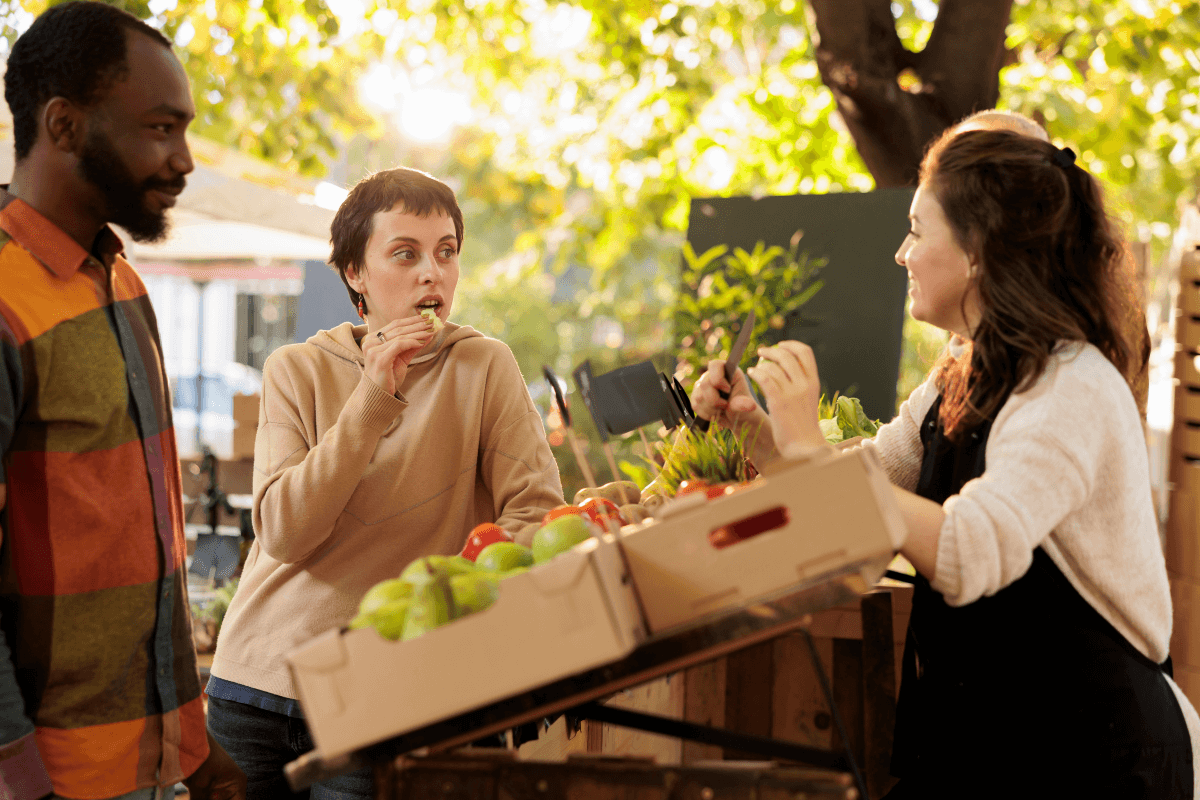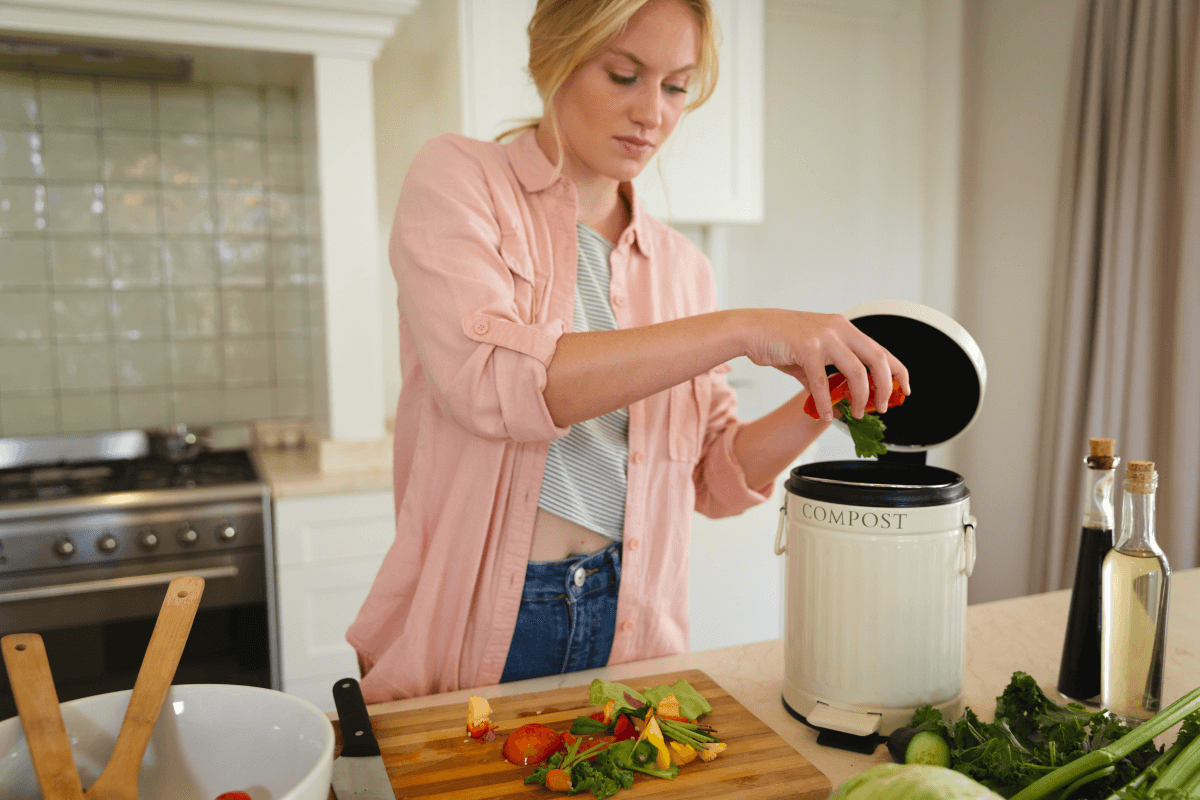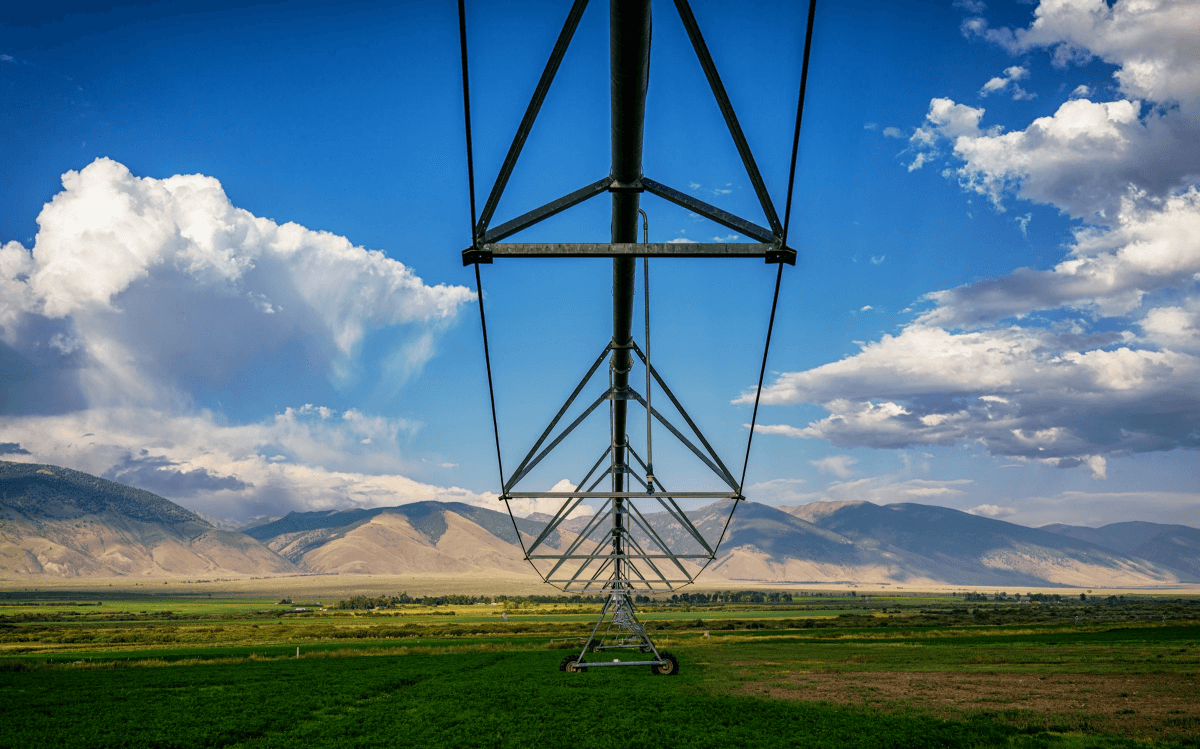
Where in America can you easily find farm-fresh food?
With harvest season around the corner, LawnStarter ranked 2024’s Best Cities to Buy Local Food.
We compared the 500 biggest U.S. cities based on 4 locavore categories. More specifically, we factored in access to u-pick farms, on-farm markets, and local dairy farms. We also considered local food movement chapters like Slow Food USA and Buy Fresh Buy Local, among 21 total metrics.
Shop at your local farmers market and cook up a 100-mile meal with inspiration from our ranking below. To learn how we ranked the cities, see our methodology.
Contents
- City Rankings
- Top 5 Close Up
- Key Insights
- Ask the Experts
- Methodology
- Final Thoughts: Grow-It-Yourself
City Rankings
See how each city fared in our ranking:
Top 5 Close Up
Check out the slideshow below for highlights on each of our top 5 local food-loving cities.
Key Insights
Portland, Oregon (No. 1), continues to dominate the local food scene, alongside its suburbs, Beaverton (No. 7), Hillsboro (No. 11), and Gresham (No. 19). This region has a high density of farm stands, u-pick farms, and agri-tourism businesses.
Foodies from Maryland to New Hampshire take eating local seriously. All ranked cities across 7 Mid-Atlantic and Northeastern states score in the top half of our ranking, with impressive access to farm stands, u-pick farms, and farms offering on-farm markets, pickup, and delivery services.
Texas cities and Southwestern states finish near the bottom, alongside Anchorage, Alaska, in last place. Most cities in Nevada, New Mexico, Arizona, and Texas lack farm stands, on-farm markets, and u-pick farms for finding fresh produce. These cities also claim fewer local businesses like craft breweries and wineries.
Without a national directory, we couldn’t highlight grocers selling local food in this study. Maybe urban Texans aren’t seeking out farm stands when H-E-B is right around the corner, stocked with locally sourced products.
Chomp through more regional insights below.
Ask The Experts
From reducing greenhouse-gas emissions to boosting your local economy, eating local offers plenty of benefits for everyone in your community.
We turned to a panel of experts for more local food insights. See their tips below.
- How can people vet the quality of the local food they purchase?
- What are the best ways to find quality local producers?
- Locally produced food isn’t necessarily cheaper than food sold at grocery stores. How can budget-conscious shoppers buy locally without breaking the bank?
- What are the most common misconceptions about eating locally?







How can people vet the quality of the local food they buy?
Largely by using social media and by word of mouth. There are farmers markets held during warmer months in Ames and in Boone, Iowa. In Des Moines, they’re held year-round. The farmers markets serve as a source of information as well as locally grown items.
What are the best ways to find quality local producers?
Farmer Markets and possibly the local co-op store.
Locally produced food isn’t necessarily cheaper than food sold at grocery stores. How can budget-conscious shoppers buy locally without breaking the bank?
Consumers must be very conscious of what food costs at local grocery stores and then how much more they are willing to pay for buying directly from the producer or a local small business. Again, I believe social media (such as the Boone page on Facebook) plays a role.
What are the most common misconceptions about eating locally?
It’s a myth that these folks are always “back to nature” types. It might be just as much wanting fresher items, items with fewer chemicals. They may also simply want to support local producers.

How can people vet the quality of the local food they buy?
Quality is a very subjective measure that can vary from person to person. There are industry standards in agriculture such as Grade A vs. Grade B or “seconds.” This often has more to do with the size and physical appearance of the product (especially for produce) than it does with flavor or edibility.
Consumers may also have values that they equate with quality that have to do with how the product was grown or raised—meaning the farm practices and values. One of the best ways to “vet” quality—or at least gauge whether the product you’re interested in is in line with what you’re expecting—is to actually speak with the grower themselves, or an employee that is familiar with the farm’s products. This is possible when buying directly from a farm or buying from a retail establishment or restaurant that source-identifies their local products.
What are the best ways to find quality local producers?
Visit local farmers markets, browse the vendors, and strike up conversations with them. Also, there are databases of local farms such as MarketMaker or Local Harvest—although farm profiles are not always up to date on these. In Michigan, we have Taste the Local Difference which tends to be more up-to-date.
Locally produced food isn’t necessarily cheaper than food sold at grocery stores. How can budget-conscious shoppers buy locally without breaking the bank?
Understanding the seasonality of your local agriculture can help. When items are in peak season and plentiful, prices tend to be lower. See if the produce can be stored or preserved (frozen, canned, etc.). Proteins tend to be more expensive, so going for smaller portions and rounding out meals with filing fruits and vegetables can make for budget-friendly meals.

How can people vet the quality of the local food they buy?
Consumers need to educate themselves (from reputable sources like University Extension services, non-profits with a long history of solid reporting) about what represents quality. Is it taste, texture, nutritional quality?
Much of what we’ve been trained to identify as quality is really aesthetic choices like color and lack of blemishes, which may not indicate good taste or nutrition. Produce in particular needs to be handled properly by both farmers and consumers or it doesn’t matter what the quality was coming out of the ground. Farmers have recently stepped up their game in managing quality. It’s particularly important for produce growers to correctly take the field heat out of their products to make sure they will store well for consumers.
For meat, consumers have to accept that locally produced meats are going to be frozen and that freezing doesn’t degrade quality – and they have to learn steps to take to cook with frozen products. Organic meat is very difficult for farmers because of the lack of organic grains and local organically certified processing plants. But consumers need to think about what constitutes their main reason for buying locally produced meats – health (measures of calories and fat may vary in meat from ruminants that graze compared with meat from animals that don’t graze), environment (grazing can be beneficial to managing marginal lands, pigs and chickens can be useful for cleaning up food waste left in the fields, (not waste from the household!)
Above all those consumers who have the time and money should cultivate relationships with producers and cooperatives)to build relationships of trust. It can take time for locovores to develop the skills and routines to make these kinds of food their priority.
What are the best ways to find quality local producers?
Employing the same strategies that low-income consumers always do – working with friends and family to buy in bulk; taking advantage of numerous double-up bucks programs (if using SNAP), buying in peak season and preserving.
What are the most common misconceptions about eating locally?
We should be talking about sustainable food systems in general, and we should be taking a regional approach to food systems. That may mean buying things from neighboring states – but the basic premise remains the same:
- Ecological production of produce, dairy, and meat
- Making sure farmers, food businesses and workers are making a living wage
- Authentic personal relationships of trust that support all people in the community having access to this kind of food.
Sustainable food systems will not happen through the market alone – it will take a mix of market-based exchanges, self-provisioning, informal exchanges and sharing, policies, cooperatives.

How can people vet the quality of the local food they buy?
The best way to ensure high quality food purchased locally is to get to know the farmers growing that food. A farm visit can be highly insightful and also meaningful to the farmer to see heightened interest in their hard work. Many areas house local food co-ops, and many of these (i.e. the Bozeman Co-Op in Bozeman, MT and Moonflower Co-Op in Moab, UT), feature the local farmers from which they source.
What are the best ways to find quality local producers?
At your local farmers market and food co-op. Many small towns also house local food social media groups. In Moab, UT, we have a local food co-op, a Moab Gardeners and Farmers Facebook Page, and a Moab Foodies Google Email group.
Locally produced food isn’t necessarily cheaper than food sold at grocery stores. How can budget-conscious shoppers buy locally without breaking the bank?
One way is to shop when local food co-ops have sales. During the last hour of the day, our local food co-op gives away produce that is turning. For the rest of the day, this is housed in a discount produce bin. A growing number of farmers markets and community supported agriculture programs also are accepting Supplemental Nutrition Assistance Program (SNAP) benefits.
What are the most common misconceptions about eating locally?
Buying local doesn’t equate to buying vegetarian or vegan.
Also, the perception that local food costs more is tied to a complicated and broken system in the United States where industrial agriculture operations producing nutrient-poor, pesticide dependent, corporate-owned crops such as mass-produced corn, soy, and wheat, are subsidized. Hence, products featuring these in our grocery stores are cheaper.

How can people vet the quality of the local food they buy?
In conventional supply chains, quality can be based on size, color, taste, etc. In local food systems, consumers may value attributes of products that don’t fit within these traditional “quality” measures.
There is a growing movement to reduce food waste, and some local food markets cater towards providing “ugly produce” that would otherwise be discarded. Other consumers may value environmental attributes over other traditional quality measures.
What are the best ways to find quality local producers?
Many Cooperative Extension offices offer guides to local farms, and locations of farmers markets. The U.S. Department of Agriculture has also created national directories.
Locally produced food isn’t necessarily cheaper than food sold at grocery stores. How can budget-conscious shoppers buy locally without breaking the bank?
In-season local produce can be very cost-competitive with grocery store prices. In addition, many producers sell “seconds” at farmers markets – items that may have small blemishes but are otherwise perfectly fine.
Joining a farm that has a community-supported agriculture model (where you pay for a share of the weekly harvest at the beginning of the season) can also be a very economic way to buy local and support local farms and ranches.
I also recommend that budget-conscious locavores interested in purchasing meat consider less popular cuts. For example, a Denver steak.
What are the most common misconceptions about eating locally?
Perhaps that local food is always more expensive. Yes, there are items that can be more expensive, particularly as farms and ranches that sell through local food markets tend to be smaller in scale and have higher costs of production, but there are some items that are cheaper.

How can people vet the quality of the local food they buy?
The concept of quality really depends on the individual. Some attributes can be assessed visually at the farmers market or farm stand, and the same with taste characteristics.
What a lot of consumers care about though are the attributes that are not easily observed, like production processes, worker treatment, and animal welfare. Educate yourself on the impact of different production techniques and speak to farmers to find those whose values align with yours. Word of mouth and social media are other great ways to identify high-quality options.
What are the best ways to find quality local producers?
Again, word of mouth and social media are the best ways to find producers in your area. There are national databases like Local Harvest that are a good place to start, but details aren’t necessarily comprehensive or up to date. Your state probably has a locally grown website for its state branded program that may include producer information. The Connecticut Dept of Ag has a list of farmers markets, farm stands, and CSAs in the state.
Locally produced food isn’t necessarily cheaper than food sold at grocery stores. How can budget-conscious shoppers buy locally without breaking the bank?
The best way to save money is to make sure you’re purchasing products in season. I’d recommend getting acquainted with your state’s crop availability calendar, and purchase locally when those products are in abundance. Joining a CSA can be a good way to get local products more affordably, especially for meat. If you are concerned about eating all the produce you receive, a lot of CSAs offer half-shares, or you might consider splitting a share with a friend.
What are the most common misconceptions about eating locally?
The biggest misconception is that eating local is too hard, and only possible for wealthy consumers. It requires an up-front investment of time to learn about what is grown seasonally and who the area producers are. Once you get tuned into that local food network, you will find there are lots of available information sources and collaborative efforts to make this food more accessible.
Methodology
First, we determined the factors (metrics) that are most relevant to rank the Best Cities to Buy Local Food. We then assigned a weight to each factor based on its importance and grouped those factors into 4 categories: Access, Convenience, Support, and Interest. The categories, factors, and their weights are listed in the table below.
For each of the 500 biggest U.S. cities, we then gathered data on each factor from the sources listed below the table.
Finally, we calculated scores (out of 100 points) for each city to determine its rank in each factor, each category, and overall. A city’s Overall Score is the average of its scores across all factors and categories. The highest Overall Score ranked “Best” (No. 1) and the lowest “Worst” (No. 500).
Notes:
- The “Worst” among individual factors may not be No. 500 due to ties.
- This year’s analysis did not include Community-Supported Agriculture (CSAs) due to errors in the source data.
The analysis did not include farmers markets, farm-to-table restaurants, co-ops, and grocery stores selling local products due to a lack of national data.
Sources: A Greener World, Alcohol and Tobacco Tax and Trade Bureau, Brewers Association, Brewery Collectibles Club of America, Brewery DB, Buy Fresh Buy Local, Dairy Foods, Google Ads, Local Harvest, Marinas.com, Near Home, other LawnStarter studies, Slow Food USA, The Edible Schoolyard Project, Tripadvisor, U.S. Bureau of Labor Statistics, U.S. Census Bureau, U.S. Department of Agriculture, and Yelp
Final Thoughts: Grow-It-Yourself
Food travels far. Be mindful of your “food miles” — or how far it takes ingredients to get from the farm to your plate, with all the gas, packaging, and the resulting greenhouse gas emissions.
Local governments are getting involved in the locavore movement too, with New York passing legislation in 2023 requiring state agencies to increase their investments in food grown in-state.
As interest in farm-to-table cuisine continues to rise, many Americans are exploring new ways to find food grown close to home. Another way to eat local is by sourcing food from your own backyard. You could call this yard-to-table cuisine.
As of 2020, more than half of U.S. households maintain a garden. Learn how to start your own with some help from our guides:
- Not sure if you have a green thumb? Check out our gardening tips for beginners.
- Invite pollinators to your property for a produce boost.
- Turn your vegetable leftovers into a luscious garden with scrap gardening.
- Love growing flowers? How about eating them? Try this 4-course edible flower meal.
- Live in an apartment? Fill your balcony with a container garden, or design a vertical garden.
- Treat yourself with the best gardening gloves, shovels, and other tools.
- Discover the best cities for urban gardening and explore other, less conventional local cuisines.
- Explore our guide to green food, sustainable landscaping, and other eco-friendly tips.
- Get hands-on experience with your community garden, by lending your neighbor a hand, or working at a nearby organic farm.
While you’re busy cooking up a locavore storm, hire a local LawnStarter pro to keep your lawn looking as fresh as your local food.
Media Resources
Quotes from LawnStarter Editor-in-Chief, Jeff Herman
- All 3 Maryland cities finish in the top 25 of our ranking, boasting local food hubs and nearby farms with on-farm markets, pickup, and delivery services.
- Midwestern cities — Chicago (No. 8), Madison, Wisconsin (No. 14), and Minneapolis (No. 15) — stand out near the top with high access to local dairy farms, u-pick farms, and craft breweries. Farm stops are expanding the locavore movement in this region.
- Cities across the country are adopting local food school programs, like garden and kitchen classrooms and freshly harvested cafeteria lunches. 334 cities in our ranking have at least one local food school program available. Portland (No. 1) has the most, with 132 distinct programs across the city.
- 108 cities are members of Slow Food USA, while 26 cities have Buy Fresh Buy Local chapters. 8 cities — like Chicago (No. 8) and Virginia cities Alexandria (No. 16) and Richmond (No. 57) — enjoy the fruits of both groups’ advocacy efforts.
- While Lone Star State cities fall behind in Access, the Texas Triangle demonstrates high interest in local food, according to Google search results. Houston (No. 91 overall) claims the highest interest out of all 500 cities in our ranking.
- Paterson, New Jersey (No. 31), has the most butcher shops per square mile, followed by New York (No. 2) and Somerville, Massachusetts (No. 10).
- 4 Ohio cities — Akron (No. 74), Parma (No. 188), Cleveland (No. 102), and Columbus (No. 75) — enjoy the highest access to on-farm markets. Akron boasts the most, 91.
- Some cities with among the highest shares of agricultural workers — like Bakersfield, California (No. 422), Yakima, Washington (No. 415), and Yuma, Arizona (No. 482) — score near the bottom with few farm stands, on-farm markets, and dairy farms.
- Some of the best cities for eating local food are also among the most sustainable cities in general.
Local farming has been a Herman family tradition. Grandpa Julius “Cotton” Herman owned and operated Herman’s Farm in Florissant, Missouri. Families came from all over for the fresh strawberries, pumpkins, corn, and blackberries. Uncle Johnny’s farm, also in Florissant, had the apple trees, supplying area families with apples, apple cider, and hayrides in the fall.
- High-resolution images of cities
- 2023’s Best Cities to Eat Local Food ranking results
- 2021’s Best Cities for Locavores ranking results
Main Photo Credit: DC Studio / Adobe Stock / License









